
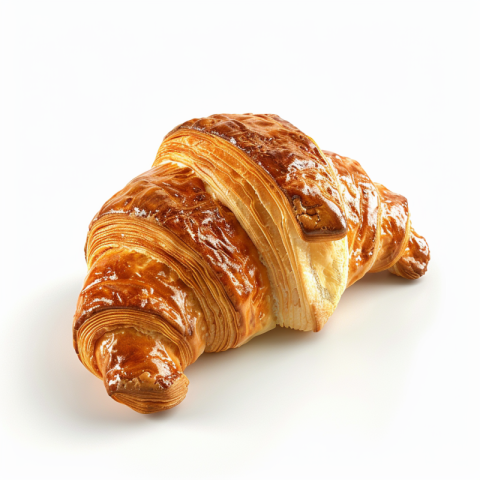
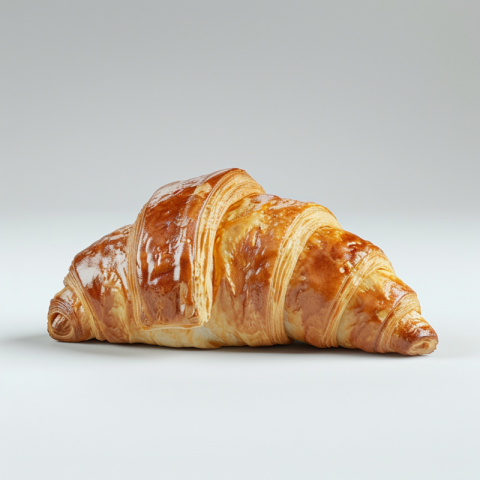
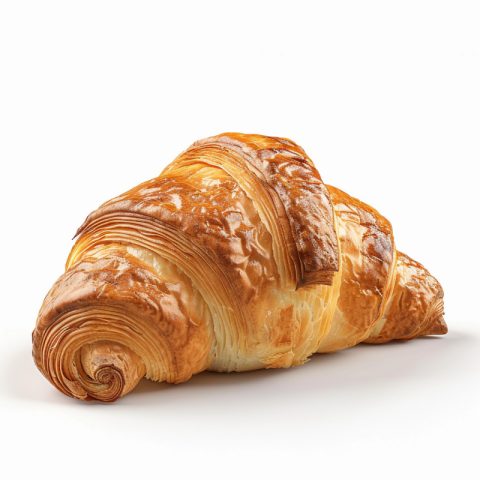

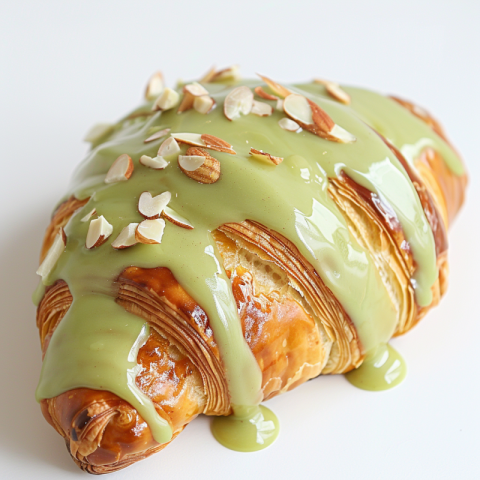
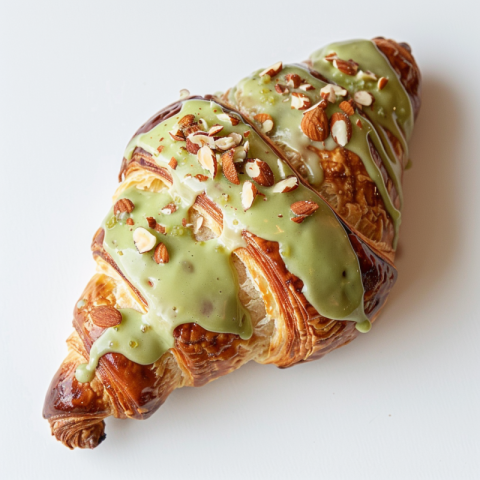



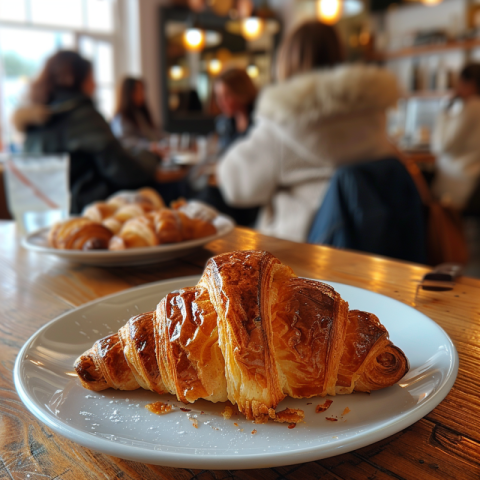
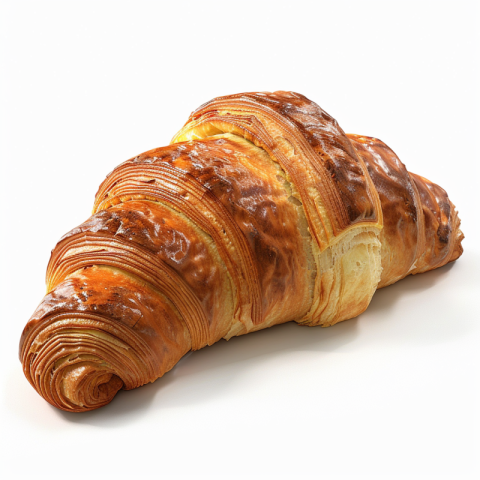
Croissant: The Buttery, Flaky Icon of French Pastry - A Culinary Delight
The croissant, a crescent-shaped pastry known for its buttery flavor and flaky texture, is a global symbol of French baking. Its delicate layers, achieved through a meticulous process called lamination, create a unique combination of crispness and tenderness that has captivated pastry lovers for generations. While often enjoyed as a breakfast treat, croissants can be savored any time of day, on their own or filled with sweet or savory ingredients.
1. The Origins of the Croissant: A Viennese Connection?
The croissant's origins are often debated, but it's widely believed to have roots in Austria, not France:
- The kipferl, a crescent-shaped pastry made in Austria, is considered the ancestor of the croissant.
- Legend has it that the kipferl was created in Vienna in the late 17th century to celebrate the city's victory over the Ottoman Turks. The crescent shape was supposedly inspired by the crescent moon on the Ottoman flag.
- However, there are records of crescent-shaped pastries dating back further in other parts of Europe.
2. The Croissant's Arrival in France: A Royal Beginning
- The croissant is believed to have been introduced to France in the 18th or 19th century, possibly by August Zang, an Austrian artillery officer who opened a Viennese bakery in Paris in the 1830s.
- Zang's bakery, which sold kipferl and other Viennese specialties, is credited with popularizing the crescent-shaped pastry in France.
- The French then adapted the kipferl, eventually developing the laminated dough technique that gives the modern croissant its signature flaky texture.
3. Lamination: The Key to the Croissant's Flaky Texture
Lamination is the process that gives croissants their distinctive layers:
- It involves repeatedly folding and rolling out a dough that has been layered with butter.
- The process creates hundreds of thin layers of dough separated by butter.
- During baking, the water in the butter turns to steam, creating air pockets that cause the layers to puff up, resulting in a light and flaky texture.
4. Making Croissants: A Labor of Love
Making croissants from scratch is a time-consuming and challenging process, requiring precision and patience:
- Ingredients: Croissant dough typically contains flour, water, yeast, sugar, salt, milk, and a significant amount of butter.
- Mixing and Kneading: The ingredients are mixed and kneaded to form a dough.
- Lamination (Turning): A block of butter is encased in the dough, and then the dough is repeatedly rolled out, folded, and chilled.
- Shaping: The laminated dough is cut into triangles, which are then rolled up into the characteristic crescent shape.
- Proofing: The shaped croissants are allowed to rise (proof) before baking.
- Baking: The croissants are baked in a hot oven until golden brown and flaky.
5. Types of Croissants: Variations on a Classic
While the classic croissant is made with a plain, buttery dough, there are several variations:
- Pain au Chocolat: A rectangular pastry made with croissant dough and filled with chocolate. Also known as a chocolate croissant.
- Almond Croissant: A croissant filled or topped with almond cream and often sprinkled with sliced almonds.
- Savory Croissants: Croissants can also be filled with savory ingredients, such as ham and cheese, spinach and feta, or mushrooms.
6. Enjoying Croissants: A Versatile Treat
Croissants can be enjoyed in many ways:
- Plain: Eaten on their own, perhaps with a cup of coffee or tea.
- With Butter and Jam: A classic way to enjoy croissants, particularly for breakfast.
- Filled: With sweet fillings like chocolate, almond cream, or fruit preserves, or savory fillings like ham and cheese.
- As a Sandwich: Croissants can be used as a base for sandwiches.
7. Croissants in Popular Culture: A Symbol of Frenchness
The croissant has become a symbol of French culture and is often featured in movies, TV shows, and books:
- It's often associated with Parisian cafés and a romanticized image of French life.
- The croissant is a popular breakfast item and a staple of French bakeries.
8. The Future of the Croissant
- The croissant continues to be a beloved pastry worldwide.
- Bakers are experimenting with new flavors, fillings, and techniques, creating innovative variations on the classic croissant.
- The demand for high-quality, artisanal croissants is on the rise.
Conclusion:
The croissant, with its buttery aroma, flaky texture, and delicate layers, is a testament to the art of French baking. Its journey from its possible Viennese origins to its status as a global icon is a story of culinary innovation and cultural exchange. Whether enjoyed plain, filled, or as part of a larger meal, the croissant offers a delightful sensory experience that has captivated pastry lovers for generations. As baking techniques continue to evolve and new flavors emerge, the croissant will undoubtedly remain a cherished pastry, embodying the essence of French culinary artistry and bringing a touch of Parisian charm to breakfast tables and café counters around the world.
Croissant, croissants, croissant recipe, how to make croissants, croissant history, French croissant, Viennese croissant, kipferl, pain au chocolat, almond croissant, chocolate croissant, croissant dough, lamination, proofing, baking croissants, butter croissant, best croissant, croissant calories, croissant shop near me, buy croissants online, croissant pronunciation, croissant sandwich, French pastries, Viennoiserie, August Zang.

